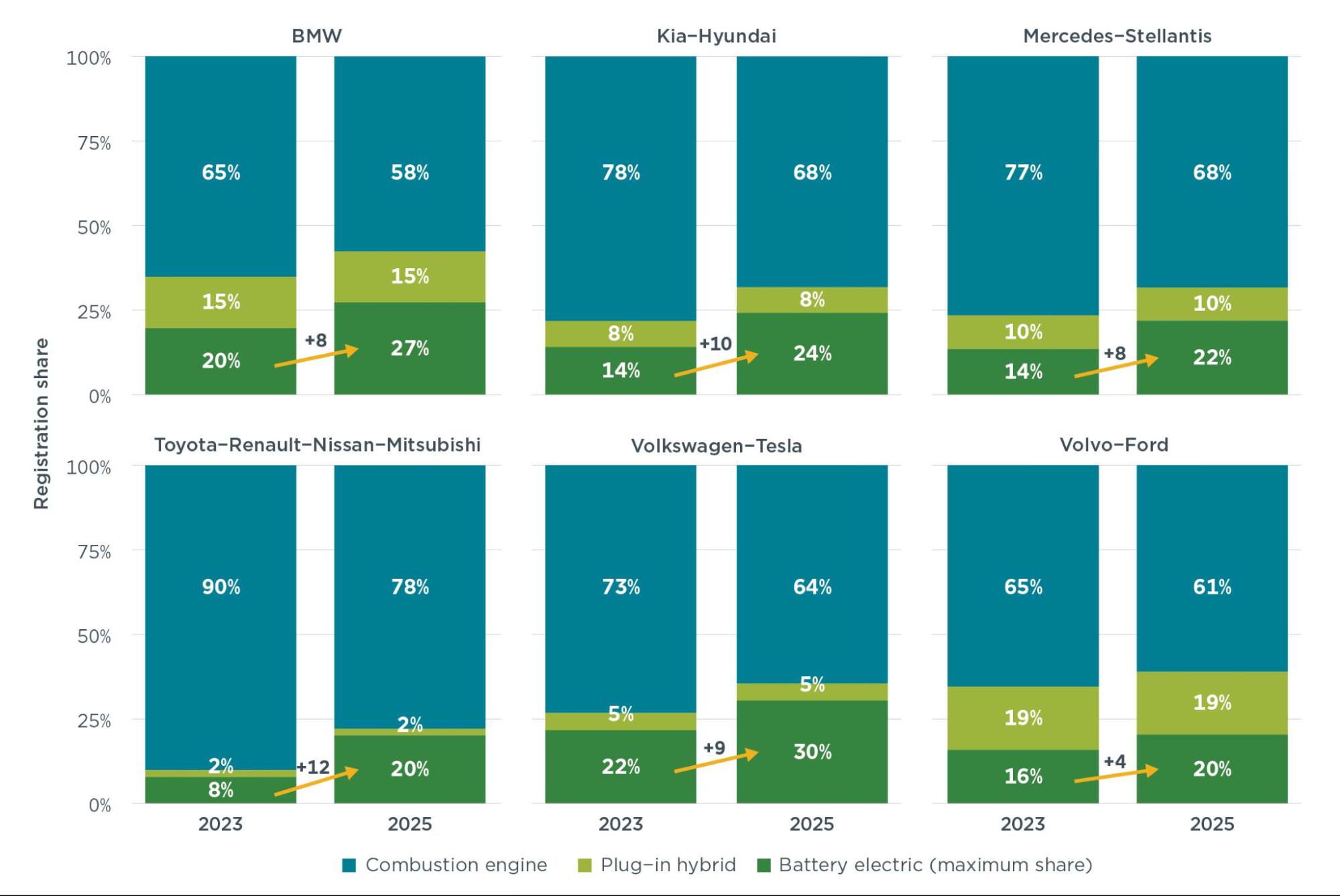- Blog
- CO2 Emission Restrictions for Cars in 2025
CO2 Emission Restrictions for Cars in 2025
Learn about electric vehicle trends and used car market opportunities, and discover how 2025 EU CO2 targets will affect car manufacturers and car traders.

Car sellers and traders need to get ready for new CO2 rules coming in 2025, potentially changing the way we buy and sell cars in Europe. The good news is that these changes bring new business opportunities if you know what to expect.
Let's look at what's happening: the EU wants cars to produce less CO2. Every car maker needs to follow these new rules. When customers look for new cars to buy, they'll pay more attention to CO2 numbers. This means the types of cars people want to buy might change. The key for you as a car trader is to understand what these new rules mean for your business and which cars you’ll need to stock on.
New CO2 Targets for Passenger Cars 2025 in EU
In 2023, the EU passed an emission legislation that requires cars to produce less and less CO2 until the we hit 0 emissions in 2035.
Here's what you need to know about the new rules: from 2025, new cars must produce 15% less CO2 than they did in 2021. The target is 93.6 grams of CO2 per kilometer. From 2025, the EU will use the WLTP figures for these CO2 targets, instead of the NEDC values.
The big news is - car makers who don't meet these targets will need to pay penalties. For every gram over the limit, they'll need to pay €95 for each car they sell.
Car makers who are selling cars in the hundreds of thousands could potentially pay millions in fines.
Impact on electric car manufacturing
Car makers are in a tricky situation. They need to sell more electric cars to meet the new CO2 targets, but it's not as easy as it sounds. ACEA has already requested a time extension for the 2025 targets, saying it's getting harder to sell enough electric cars to meet the goals.
According to ACEA, car manufacturers are facing several challenges:
- Not enough charging points for electric cars
- High costs of green energy
- Limited supply of raw materials for batteries
- Fewer people buying electric cars than expected
Car makers will have to sell more zero and low-emission vehicles (ZLEVs) to lower their average CO2 numbers. These include both fully electric cars and plug-in hybrids that produce less than 50g/km of CO2.
But there's a catch: not all manufacturers can quickly make lots of new electric models. Some need more time to change their factories and develop new cars. This is especially true for smaller car makers.
The EU has already agreed to help car manufacturers by offering incentives and a pooling system through which car makers can team up to share their CO2 targets.

Six possible pooling scenarios
Will electric cars become more affordable in Europe?
EVs are expected to become significantly more affordable in the coming years, mostly due to battery cost reductions and optimization of manufacturing processes.
European automakers are preparing to launch several budget-friendly EVs in 2025. Seven new electric models priced under €25,000 will launch by 2025.
The combination of new affordable models, falling battery costs, and remaining incentives in countries like Italy and Spain suggests 2025 will make EVs more accessible, though perhaps not as dramatically as some might hope.
The transition to mass-market affordability appears to be gradual rather than sudden.
How will the new CO2 targets affect the used car market?
How will these new targets affect the new car market? We're likely to see:
- More electric and hybrid models coming out
- Some manufacturers focusing on making their petrol cars more efficient
- Car makers working together to meet these targets
- Different prices and deals to encourage people to buy electric cars
As always, whatever happens in the new car market has a direct influence on the used one.
For car traders, it's important to understand that the supply of electric cars might change over the next few years. Car makers might make more electric and hybrid cars and sell fewer high-emission cars, and some brands will have more electric models than others.
In simple terms, more electric and low-emission cars will inevitably come to market, and the prices and types of available cars will change.
How should dealers and fleet managers adjust their strategies?
To prepare for the new CO2 goals and all the consequences it might have on the used car market, these are our suggestions to car traders:
- Keep a mix of both electric and efficient petrol and diesel cars in stock
- Learn about battery lease
- Learn which electric cars have the best battery life
- Watch changes in government support programs
- Focus on mid-range electric models that offer good value
- Be ready to explain total ownership costs to customers
- Look for manufacturers who offer strong battery warranties
- Stock on used electric cars - they often offer better value than brand new ones
And the best part about these changes?
They give you new ways to grow your business. While some traders worry about change, smart traders see it as a chance to do better.
By getting ready now, you can be ahead of others when the new rules start.
De blog van eCarsTrade bevat zorgvuldige samengestelde lijsten en ranglijsten van:
Blader door onze tweedehands auto's
